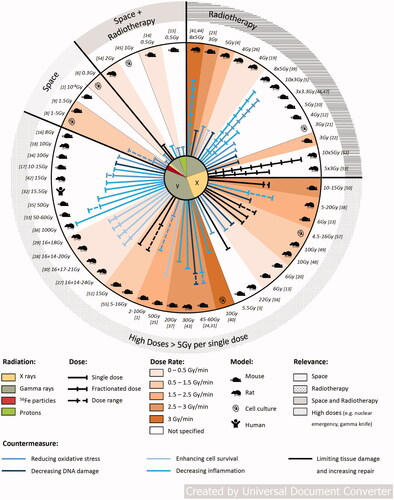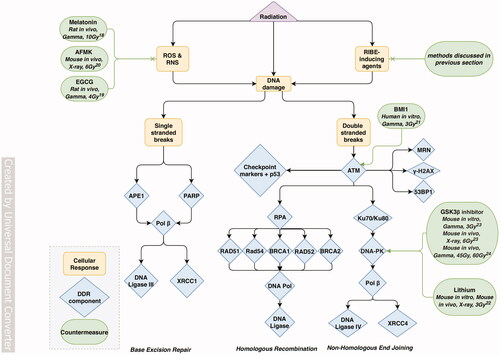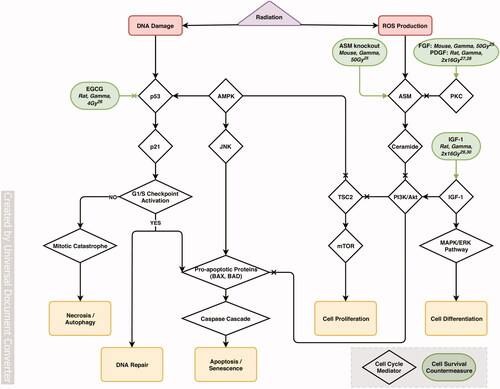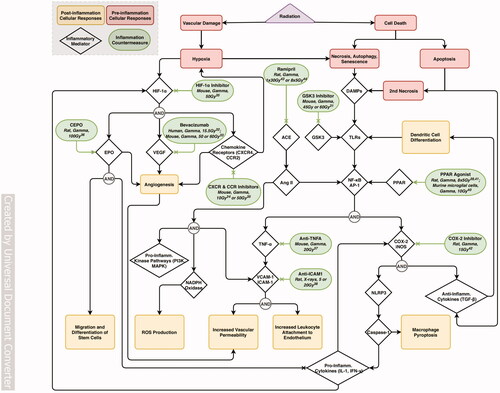Figures & data
Table 1. Summary of the discussed countermeasure agents classified into five main approaches (targeting reactive oxygen species, DNA damage, cell survival, inflammation and tissue repair), according to the type of CNS impairment to be treated.

![Figure 2. Representation of radiation-induced responses of the CNS. [1–4] = (Belka et al. Citation2001; Satyamitra et al. Citation2007; Lowe et al. Citation2009; Baluchamy et al. Citation2010; Beckhauser et al. Citation2016), [5–16] = (Fournier and Taucher-Scholz Citation2004; Limoli et al. Citation2004; Kim et al. Citation2006; Al-Jahdari et al. Citation2008; Eriksson and Stigbrand Citation2010; Chakraborti et al. Citation2012; Parihar and Limoli Citation2013; Shirai et al. Citation2013; Kempf et al. Citation2014; Parihar et al. Citation2015), [17–24] = (Clatworthy et al. Citation1999; Sannita et al. Citation2007; Machida et al. Citation2010; Sanchez et al. Citation2010; Marty et al. Citation2014; Rudobeck et al. Citation2014; Sokolova et al. Citation2015), [25–46] = (Tofilon and Fike Citation2000; Vazquez and Kirk Citation2000; van Vulpen et al. Citation2002; Maier Citation2003; Mizumatsu et al. Citation2003; Lyubimova and Hopewell Citation2004; Raber et al. Citation2004; Rola et al. Citation2004; Casadesus et al. Citation2005; Rola et al. Citation2005; Hwang et al. Citation2006; Fike et al. Citation2009; Huang et al. Citation2010; Moravan et al. Citation2011; Kadir et al. Citation2012; Monje and Dietrich Citation2012; York et al. Citation2012; Rivera et al. Citation2013; Greene-Schloesser et al. Citation2014; Morganti et al. Citation2014; Hur and Yoon Citation2017), [47–60] = (Brouwers and Poplack Citation1990; Hall et al. Citation2004; Butler and Haser Citation2006; Rosi et al. Citation2008; Zeltzer et al. Citation2009; Liu et al. Citation2010; Britten et al. Citation2012; Greene-Schloesser and Robbins Citation2012; Armstrong et al. Citation2013; Greene-Schloesser, Moore, and Robbins Citation2013; Kumar et al. Citation2013; Britten et al. Citation2014; Makale et al. Citation2017; Acharya et al. Citation2019).](/cms/asset/190feff7-3498-41b9-bf8e-ab21474e4119/irab_a_1820598_f0002_c.jpg)



